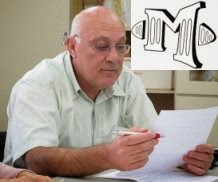The Museum
Following the establishment of similar museums in London, Vienna and Berlin, and upon realizing the importance of handicrafts and industrial design, the Museum of Applied Arts in Budapest was founded by the Hungarian Parliament in 1872.
From the start, the Museum has collected applied art works contemporary and historical, from Hungary and abroad. Its collections have come from several sources.
The core of the historical collection consists of antiques transferred from the Hungarian National Museum, while the contemporary collection was originally built up from purchases at world fairs (Vienna 1873, Paris 1878, Paris 1889) and gifts by companies (Herend Porcelain Manufactory, Zsolnay).
As the collections expanded, a building was erected to accommodate them. The opening of the Museum building on 25 October 1896, attended by the monarch, Francis Joseph, was the grand event marking the end of Hungary's Millennium celebrations.
The Museum's first two directors, György Ráth (1828–1905) and Jenő Radisics (1856–1917), were internationally renowned figures who provided the Museum with extensive and lively contacts at home and abroad, and the collections benefited accordingly.
Jenő Radisics takes the credit for laying the foundations of the Art Nouveau collection, particularly through his purchases at the Paris World's Fair of 1900 and at the Christmas exhibitions held in the Museum each year. He also acquired outstanding items for the historical collection.
After Gyula Végh took over in 1917, contacts with art collectors began to dominate. The Friends of the Museum Association also took an active part in acquiring many fine items and collections.
The National Collections Alliance was set up in 1922 to collectively promote the interests of several public collections. Between 1934 and 1948, the Museum of Applied Arts temporarily lost its independence and became the applied arts branch of the Hungarian National Museum.
The Museum greatly expanded its art work holdings between the late 1940s and the early 1960s. Many of these were items rescued from large houses and palaces, and placed in the Museum by the Ministerial Commission for Endangered Private Collections. After the Communist takeover in 1948, many hitherto independent collections were wound up in the name of rationalisation (Ráth Museum, and the aristocratic Zichy and Vigyázó collections). Most of their contents survived in public collections, including the Museum of Applied Arts.
In 1948-1949, the Museum closed a major gap in its holdings by acquiring two collections: over five hundred pieces which had belonged to Ottó Fettick, and the ceramics collection of Vince Wartha, professor of chemistry and colleague of Vilmos Zsolnay. In 1961, Kiscell Museum handed over to the Museum the collection of Miksa Schmidt, a Viennese furniture manufacturer.
The additions to the collections since the 1950s have mainly been pieces related to Hungarian history or - increasingly - contemporary art works. Contemporary Hungarian art remains the principal focus of collecting today.
The Esterházy Treasury
The Museum of Applied arts has several dazzling masterpieces from the treasury of one of the wealthiest aristocratic families in Hungary, the Esterházys. Gold- and silverware, Turkish weapons, old Hungarian aristocratic costume and jewellery and many unique art works give a flavour of the lifestyle of the Hungarian aristocracy and its wealth.
The Esterházys were the only Hungarian aristocratic family who managed to preserve their treasury through the vicissitudes of the country's history, and added to it continuously between the 17th and the 19th centuries.
Loyal to the Habsburgs, the family's rise owed much to Palatine Miklós Esterházy (1582-1645), the founder of the treasury. Its great collector, however, was his son Duke Pál (1635-1713), who also became palatine of Hungary. Pál was also a poet and composer, and he carefully preserved the family's heritage and expanded the legendary collection through a consistent policy of acquisitions and commissions.
From the second half of the 16th century, it was customary for aristocrats to set up collections known as Kunst- und Wunderkammers, embracing the wonders of the natural world, human creations, art works and scientific instruments, and constituting a true microcosm.
As with many Kunstkammers throughout Europe, the Esterházys modelled part of their treasury on Emperor Rudolph's collection in Prague. They therefore included such natural specimens as shells and snails, a one-and-a-half metre long elephant tusk and goldsmith's work and other art works with settings of ostrich eggs and coconuts, as well as various clocks and curios.
An interesting piece in the collection is a table decoration showing the triumph of Bacchus made by the famous Augsburg goldsmith Abraham I. Drentwett. The Vezekény Platter, by Philipp Jakob Drentwett, is a memorial to the great hope László Esterházy (1626-1652) and the other members of the family who fell in the Battle of Vezekény. There are many other masterpieces by foreign (Hans Petzolt) and Hungarian (Sebestyén Hann) craftsmen in the treasury.
The treasury was held in the castle of Fraknó (Forchnstein, Austria) until the end of the First World War, when most of it was taken to Budapest. During the Hungarian Soviet Republic of 1919, together with other private collections, the treasures were taken to the Museum. Since the Museum took great care of them, Duke Miklós Esterházy entered into a deposit agreement in 1920, confirmed by his son Duke Pál in 1923. In 1944, however, as the Soviet army approached, the art works were placed in the palace in Buda Castle, which received a direct hit during the siege of Budapest. It was only in 1948-1949 that the palace was opened up and the damaged treasures retrieved. The brilliant work of the restorers continues today, re-assembling out of fragments each masterpiece of the only Hungarian aristocratic treasury which survives intact.
fonte: @edisonmariotti #edisonmariotti http://www.imm.hu/en/contents/29,The+Museum



Nenhum comentário:
Postar um comentário